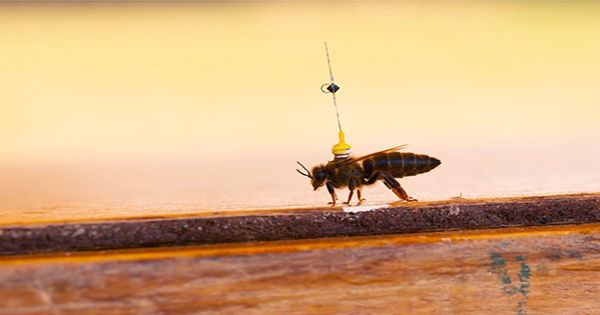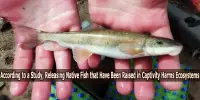Endangered Southern Resident killer whales eat a variety of salmon, including Chinook and other species. According to a new investigation, the supplies come from all over the world, including Alaska and the Central Valley of California.
Each of the various salmon stocks has its own migration patterns and time. They work together to provide the whales with a “portfolio” of prey that will sustain them throughout the year. The problem is that several of the salmon stocks are in jeopardy.
“If returns to the Fraser River are in trouble, and Columbia River returns are strong, then prey availability to the whales potentially balances out as the whales have evolved to move rapidly throughout their range,” said NOAA Fisheries wildlife biologist Brad Hanson, lead author of the new research. “But if most of the stocks throughout their range are reduced then this could spell trouble for the whales.”
From 2004 to 2017, the researchers investigated over 150 prey and fecal samples gathered from whales. Over the course of the year, this provided the most thorough picture yet of Southern Resident prey.
“When so many prey species are endangered, then they lose some of that diversity,” Hanson said. “The question for managers is how do you support and improve this diverse portfolio of species and stocks.”
When Chinook salmon is available in the summer, the whales virtually exclusively eat it, according to the study.
During the rest of the year, they eat a variety of fish, including skates, halibut, and lingcod, as well as steelhead, chum, and coho salmon. The Columbia, Sacramento, and rivers entering Puget Sound provide the majority of the salmon consumed by the whales in the winter and spring.
Whales Rely on Hatchery Fish
Increased hatchery fish output, according to the researchers, could help support the surviving 75 whales, but this method is not without hazards.
According to Robin Baird, a research biologist at Cascadia Research Collective and a coauthor of the study, many hatchery fish are already available at specific periods of the year. Increasing the diversity of hatchery stocks to include populations that live in the whales’ range during the winter, when there appears to be less food, could be extremely beneficial.
If returns to the Fraser River are in trouble, and Columbia River returns are strong, then prey availability to the whales potentially balances out as the whales have evolved to move rapidly throughout their range. But if most of the stocks throughout their range are reduced then this could spell trouble for the whales.
Brad Hanson
“We don’t need more cookie-cutter fish that all come back during the time when Chinook are most abundant; we need to diversify and increase availability at other times of the year,” Baird said.
The federal Pacific Salmon Commission and the Washington State Legislature supplied further cash. In comparison to prior years, the financing allowed for the release of more than 11.6 million additional hatchery-origin Chinook salmon in 2020. In 2021, it will also pay for an additional 18.3 million fish.
According to the findings, hatchery production will aid in the maintenance of a diverse stock portfolio, particularly those that overlap with killer whales during the winter months. Biologists also oversee production to ensure that naturally produced salmon is not jeopardized.
Southern Residents have traditionally spent much of the summer in the Salish Sea’s inland waters. They eat Chinook salmon from the Fraser River, as well as the Skagit, Snohomish, and other rivers that enter Puget Sound. As the amount of Chinook salmon declines in the late summer, fall, and early winter, they switch to coho and chum fish.
In the fall and winter, two of the three pods, K and L, migrate to the outer coast. They spend much of their time feeding off the coast of Washington, with trips south as far as California’s Monterey Bay. The experts believe they congregate around the Columbia River because of the enormous quantity of returning salmon, which are substantially replenished by hatchery fish.
They also include salmon from as far away as Alaska’s Taku River, as well as other species, in their diet. Based on observations of whales grazing at the surface, experts believe such fish make up a higher portion of the whales’ diet than previously thought.
While following the whales down the coast, biologists took feces samples. The samples gave a more full picture, including the ocean species they eat both above and below the surface.
J pod, the third pod, spends more time in inland waters while also migrating around Vancouver Island’s west coast. They have access to a variety of fish that cross a sort of salmon superhighway south to West Coast rivers.
Northern Residents Pose Competition
The study also looks into the possibility of Southern Residents competing for prey with Northern Residents killer whales. These whales belong to a distinct group that typically swims in the waters off Vancouver Island and further north in Canada. The number of Northern Residents has risen to around 300, whereas the number of Southern Residents has decreased.
These contrasting patterns could be due to the Northern Residents’ increased prey availability. Before reaching the Southern Residents, salmon returning south from the waters near Alaska and British Columbia pass through the Northern Residents’ area.
When the researchers compared their findings to those of a previous Canadian study of Northern Residents, they discovered that the Northern Residents ate larger and older salmon. The Southern Residents’ diet lacked the largest and oldest class of fish ingested by the Northern Residents.
The Southern Resident J-pod, which forages to the north of the other two pods, could also benefit from earlier access. According to the study, J-pod has a higher reproductive rate than the other pods. Chinook salmon populations are also declining along the West Coast, and other predators may be to blame.
“The net result is that the consistent consumption of these smaller fish, which have a lower caloric value, may pose an additional challenge to the Southern Resident killer whale population’s ability to meet their energetic needs,” the scientists wrote.
The Southern Residents have been identified as one of nine national Species in the Spotlight by NOAA Fisheries. These species are critically endangered, and focused recovery efforts, particularly prey conservation, can help them recover.
The findings of the prey study have already been incorporated into NOAA Fisheries’ West Coast Region’s proposal to expand essential habitat for Southern Residents along the West Coast.
“Knowing what these whales eat throughout the year and across their various habitats helps us focus recovery efforts for both the Southern Residents and the salmon they rely on,” says Lynne Barre, Recovery Coordinator for the Southern Residents at NOAA Fisheries West Coast Region.
















